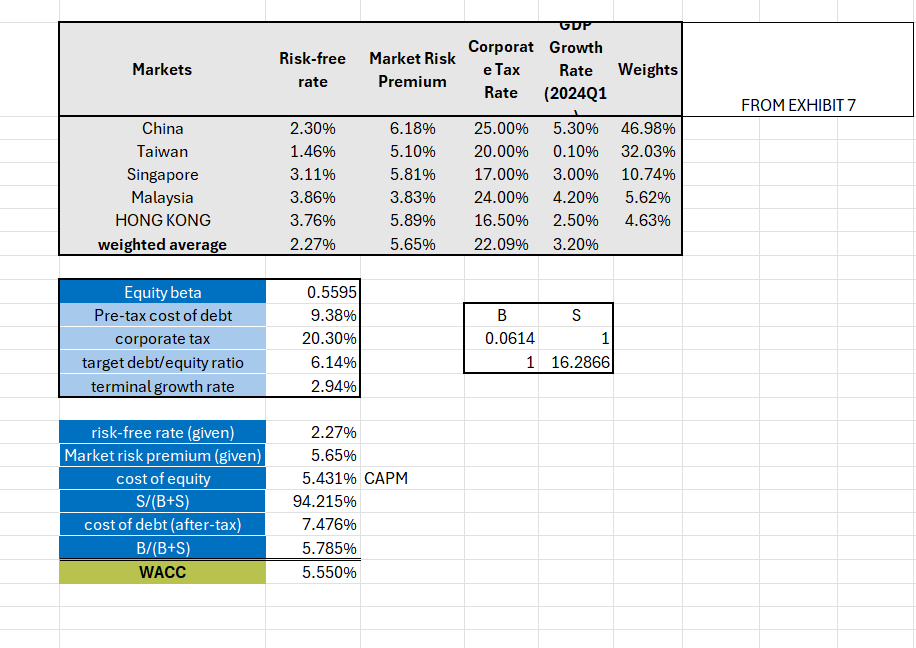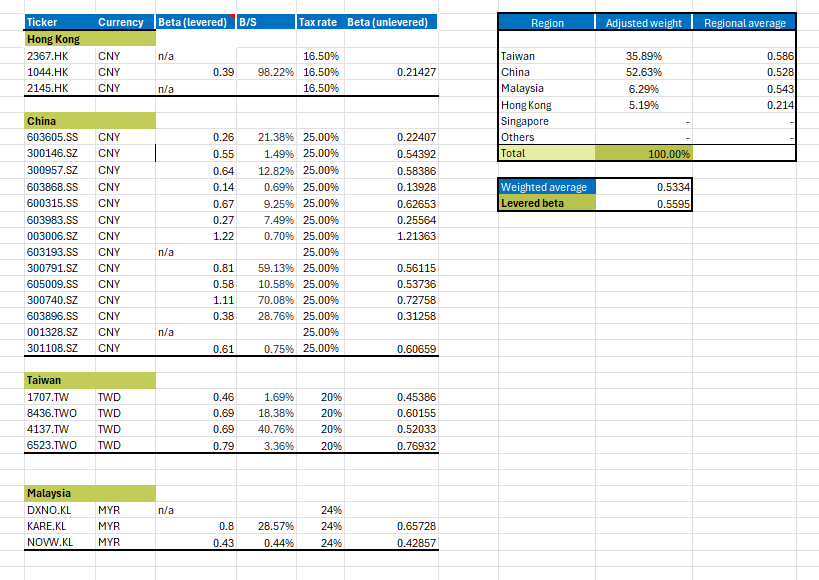
In this article, Vincent WALGENBACH (ESSEC Business School, Grande Ecole Program – Master in Management, Exchange Student) compares the role of an economic analyst within the financial industry to that in the corporate sector and highlights the associated career trade-offs.
Daimler Truck AG
Daimler Truck is the world’s largest manufacturer of commercial vehicles, selling over 460,000 trucks globally in 2024 and generating €54.1 billion in revenue. Headquartered near Stuttgart, Germany, the company designs, produces, and sells trucks and buses. As of Q2 2025, it employs more than 110,000 people worldwide and operates dozens of production sites. Daimler Truck was established in 2021 as a spin-off from Mercedes-Benz and builds on a long-standing tradition in the industry.
Logo of the company.

Source: Daimler Truck.
A Comparison of an Analyst Position in the Financial and Corporate Sectors
During an internship in the Economic and Market Intelligence Team, the author gained insight into how economists work within a multinational corporation. While economists are often associated with banks, insurance companies, or financial service providers, many large industrial firms also maintain economics departments. Unlike in banks, where teams are highly specialized, corporate economics departments are smaller and require team members to cover a wide range of expertise.
Economists in the Financial Industry: Specialists in a Complex Organization
In banks and other financial institutions, economics teams are typically large and highly specialized. Each economist focuses on a narrow field – such as monetary policy in a specific country, credit risk, or commodity markets. This high degree of specialization reflects the complexity of modern financial markets and the importance of precise analysis.
For example, one analyst might dedicate their entire career to analyzing the U.S. Federal Reserve’s policy decisions and their impact on bond yields, others may focus on niche areas such as energy markets, foreign exchange dynamics, or the effects of fiscal policy on sovereign debt.
Another important aspect of their work is risk assessment. Analysts in banks are tasked with stress-testing portfolios against different macroeconomic scenarios – such as a sudden spike in inflation, a geopolitical crisis, or a global recession.
In summary, these are some core features of the economist’s role within financial institutions:
- Focus areas: Interest rates, inflation forecasts, financial market dynamics
- Work style: Highly quantitative, model-driven, and often tied to investment decisions
- Career tradeoff: Economists gain deep expertise in a niche area but may have limited exposure to broader economic questions
Economists in the Corporate Sector: Generalists with a Broad View
By contrast, economics departments in multinational corporations are usually smaller. At Daimler Truck, the Economic and Market Intelligence Team had only five employees covering a wide range of topics, from global macroeconomic trends to industry-specific market forecasts, and energy markets.
Because the team was small, each member had to be flexible and work across multiple domains. This required not only strong analytical skills but also the ability to communicate insights to non-economists, such as managers in strategy, sales, or procurement. The main responsibility of the team was to provide both quantitative and qualitative insights into the global truck market as well as the macroeconomic outlook of key regions for decision-makers. To this end, the team prepared a weekly briefing for the board and a more extensive report for the CFO, in addition to delivering analyses for the strategy department. Beyond top management, we also supported other departments, for example, providing inflation analyses to procurement or HR to assist them in their ongoing negotiations. In addition to supporting the team with day-to-day requests and briefings, I was also assigned independent projects. These included analyzing potential growth markets and assessing the economic impact of carbon neutrality policies.
The three most important concerns for the team were economic growth, inflation, and energy economics.
Economic Growth
Economic growth, measured primarily by Gross domestic product (GDP), was a key focus due to its strong correlation with truck sales. The company operates on a B2B model, and growth in the broader economy typically encourages firms to invest and expand their vehicle fleets—especially under favorable economic conditions. To assess this, the team relied on data from various economic research institutes and providers such as S&P Global. These datasets were then adjusted and evaluated according to internal standards, with models like Aggregate Supply and Aggregate Demand (AS/AD) serving as analytical frameworks.
Inflation
Inflation – both consumer and producer price inflation – was another critical factor. On one hand, the company runs a large procurement division responsible for sourcing truck components, and inflation plays a central role in supplier negotiations. On the other hand, inflation directly affects the financial department, especially in areas like leasing and financing, where trucks are often acquired through loans or lease agreements. Moreover, inflation influences monetary policy, and interest rate decisions by the ECB and the Fed are highly relevant for investment planning, leasing conditions, and overall demand.
Energy Economics
At the time, Europe was facing significant energy supply challenges and sharp price increases. As a result, energy economics, typically not a core focus for the team, became critically important. This was due both to the fact that trucks primarily run on fuel, which affects customer investment decisions, and because the company’s own operations and production processes consume large amounts of electricity and gas. In fact, the firm operates its own power plants. To navigate this, the team applied classical supply-and-demand analysis and closely monitored geopolitical developments and energy market news.
In summary, these are some core features of the economist’s role within the corporate sector:
- Focus areas: macroeconomics, Industry trends, global trade flows
- Work style: Broader scope, combining quantitative analysis with qualitative judgment
- Career tradeoff: Economists develop versatility but may not reach the same level of technical specialization as in finance
Key Takeaways from My Internship – Career Implications
For those considering an Analyst position, the choice between the financial industry and the corporate sector involves a tradeoff between specialization and versatility.
- If you enjoy mastering a narrow field and working with advanced models, the financial industry may be the right fit.
- If you prefer applying economics to a wide range of real-world business challenges, a corporate economics department is super interesting.
Economists in financial institutions often occupy a central role at the very heart of the organization. Their analyses directly influence investment strategies, risk management, and overall business performance. By contrast, within multinational corporations, economists tend to hold a more specialized and somewhat “exotic” position. Their insights are primarily directed toward senior management and the board, supporting strategic decision-making rather than day-to-day operations.
This distinction has important career implications. In the corporate world, economists may find it more challenging to climb the organizational ladder, as their role is less integrated with the core functions of the firm. Unlike finance, marketing, or operations, economics is not always seen as a natural pathway to executive leadership. As a result, corporate economists often remain valuable advisors rather than becoming decision-makers themselves.
My internship provided a comprehensive introduction to the wide range of fields an economic analyst can pursue. This broad exposure is particularly valuable for those considering future specialization, as it offers a clear overview of the different domains and helps in identifying which areas may be most rewarding to pursue in greater depth.
Why should I be interested in this post?
This post compares the role of an analyst in an economics team within the financial industry to that in the corporate sector, highlighting key differences in specialization and the career trade-offs involved.
Related posts on the SimTrade blog
Professional experiences
▶ All posts about Professional experiences
▶ Max ODEN Leveraged Finance: My Experience as an Analyst Intern at Haitong Bank
▶ Anouk GHERCHANOC My Internship Experience as a Corporate Finance Analyst in the 2IF Department of Inter Invest Group
▶ Lara HADDAD My Internship Experience as a Market Analyst at L’Oréal
▶ Samia DARMELLAH My Experience as a Credit Risk Portfolio Analyst at Société Générale Private Banking
▶ Nithisha CHALLA Job description – Financial analysts
▶ Alexandre VERLET Classic brain teasers from real-life interviews
Economics and data
▶ Bijal GANDHI Inflation Rate
▶ Nithisha CHALLA Bloomberg
▶ Nithisha CHALLA S&P Global Market Intelligence
Useful resources
International Energy Agency (IEA)
About the author
The article was written in September 2025 by Vincent WALGENBACH (ESSEC Business School, Grande Ecole Program – Master in Management, Exchange Student).







